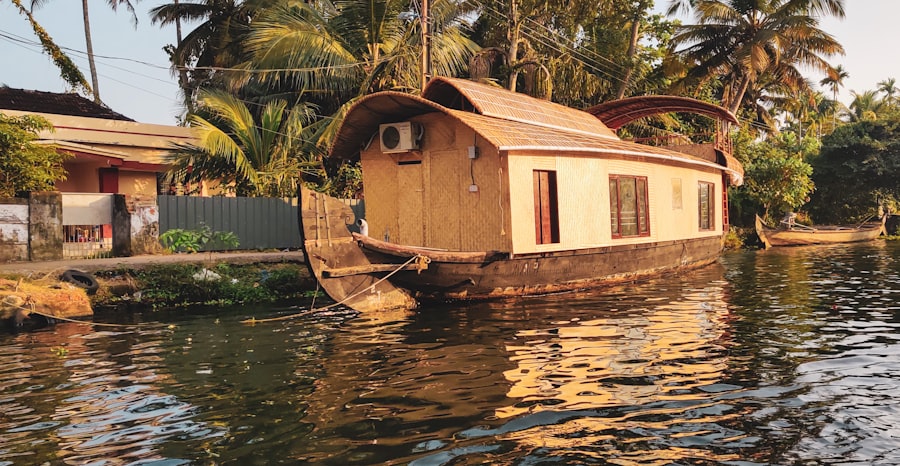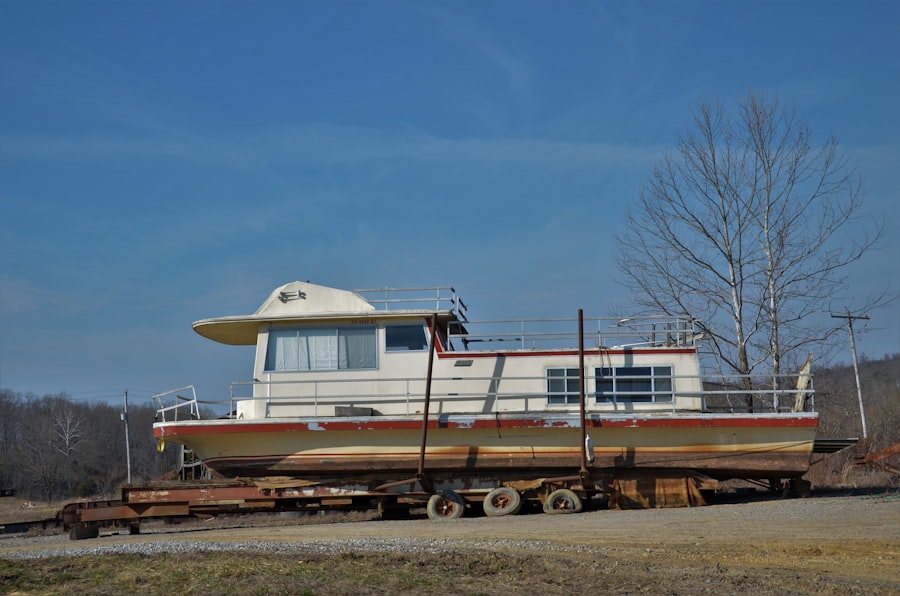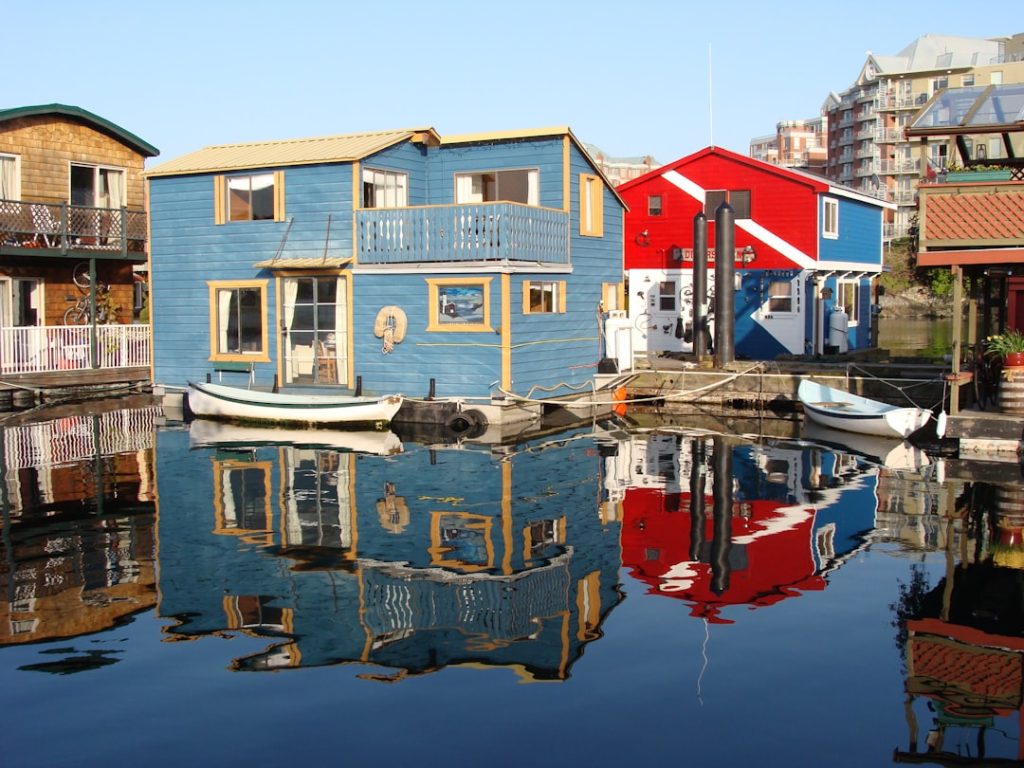Houseboat living has long captivated the imagination of those seeking a unique lifestyle that blends the tranquility of water with the comforts of home. The allure of waking up to the gentle lapping of waves against the hull, surrounded by picturesque views, is a dream for many. This lifestyle offers an escape from the hustle and bustle of urban life, allowing individuals to immerse themselves in nature while enjoying the conveniences of modern living.
The freedom to relocate your home at will, whether to chase the sun or find a quiet cove, adds an element of adventure that traditional housing simply cannot match. Moreover, houseboat living fosters a deep connection with the environment. Residents often find themselves more attuned to the rhythms of nature, observing wildlife and experiencing seasonal changes in a way that land-based living may not allow.
The simplicity of life on the water encourages a minimalist approach, where one learns to prioritize experiences over possessions. This shift in perspective can lead to a more fulfilling and less stressful lifestyle, as individuals focus on what truly matters—relationships, experiences, and personal growth.
Key Takeaways
- Houseboat living offers a unique blend of mobility, nature, and a cozy home environment.
- Important factors when buying include size, location, maintenance, and legal regulations.
- Popular destinations for houseboats include scenic lakes, rivers, and coastal areas with vibrant communities.
- Pros include freedom and waterfront living; cons involve maintenance challenges and weather dependency.
- Financing options vary, and customizing your houseboat can enhance comfort and reflect personal style.
Factors to consider when buying a houseboat
When contemplating the purchase of a houseboat, several critical factors must be taken into account to ensure that the investment aligns with one’s lifestyle and expectations. First and foremost is the type of houseboat that best suits your needs. Houseboats come in various designs, from luxurious floating homes equipped with all the amenities to simpler models that prioritize mobility and ease of maintenance.
Understanding your intended use—whether for full-time living, vacationing, or as a rental property—will guide your choice in size, layout, and features. Another essential consideration is the location where you plan to dock your houseboat. Different regions have varying regulations regarding houseboat living, including zoning laws, mooring permits, and waste disposal requirements.
Researching local marinas and their amenities is crucial; some may offer services such as maintenance, fueling stations, and community events that can enhance your living experience. Additionally, consider the climate and water conditions of your chosen area, as these factors will influence your comfort and safety while living on the water.
Popular houseboat destinations

Several locations around the world are renowned for their vibrant houseboat communities and stunning natural beauty. One such destination is Lake Powell in Arizona and Utah, where houseboating is a popular recreational activity. With its dramatic red rock formations and over 2,000 miles of shoreline, Lake Powell offers endless opportunities for exploration and adventure.
Houseboaters can anchor in secluded coves, enjoy water sports, or simply bask in the sun while surrounded by breathtaking scenery. Another iconic location is the canals of Amsterdam, where houseboats are an integral part of the city’s charm. These floating homes range from quaint and colorful to modern and sleek, reflecting the diverse tastes of their inhabitants.
Living on a houseboat in Amsterdam provides residents with a unique perspective on city life, allowing them to enjoy both the tranquility of the water and the vibrant culture of one of Europe’s most dynamic cities. The accessibility to cafes, shops, and cultural landmarks makes this destination particularly appealing for those who wish to blend urban living with a maritime lifestyle.
Houseboat living: pros and cons
| Aspect | Pros | Cons |
|---|---|---|
| Cost | Often cheaper than traditional homes; lower property taxes | Maintenance can be expensive; insurance costs may be higher |
| Mobility | Ability to move to different locations; scenic views | Limited to waterways; restrictions on where you can dock |
| Space | Cozy and efficient use of space | Limited living and storage space; can feel cramped |
| Lifestyle | Close to nature; peaceful and unique living experience | Exposure to weather elements; potential isolation |
| Utilities | Often self-sufficient with solar and water systems | Limited access to utilities; need for regular waste management |
| Community | Close-knit houseboat communities; social opportunities | May be far from urban amenities and services |
| Environmental Impact | Smaller footprint; potential for eco-friendly living | Risk of water pollution if not managed properly |
Like any lifestyle choice, living on a houseboat comes with its own set of advantages and disadvantages. On the positive side, one of the most significant benefits is the unparalleled connection to nature. Houseboat residents often enjoy stunning views, fresh air, and a sense of peace that can be hard to find in traditional homes.
The ability to move your home allows for spontaneous adventures and exploration of new environments, fostering a sense of freedom that many find invigorating. However, there are also challenges associated with houseboat living that potential buyers should carefully consider. Maintenance can be more demanding than in a conventional home; houseboats are subject to wear from water exposure and require regular upkeep to prevent issues such as leaks or mold.
Additionally, space is often limited on houseboats, necessitating a minimalist lifestyle that may not suit everyone’s preferences. Storage solutions must be creatively implemented, and residents may need to adapt their habits to accommodate a smaller living area.
Tips for maintaining a houseboat
Proper maintenance is crucial for ensuring the longevity and comfort of a houseboat. Regular inspections should be conducted to check for leaks or damage to the hull, as well as to assess the condition of plumbing and electrical systems. It’s advisable to create a maintenance schedule that includes tasks such as cleaning the exterior, checking for barnacles or algae growth, and ensuring that all safety equipment is in working order.
Another important aspect of maintenance is managing waste disposal responsibly. Many marinas provide pump-out services for sewage tanks; however, it’s essential to familiarize yourself with local regulations regarding waste management. Additionally, investing in high-quality materials for repairs and upgrades can save money in the long run by reducing the frequency of maintenance tasks.
Regularly cleaning and inspecting appliances will also help prevent costly repairs down the line.
Financing options for purchasing a houseboat

Financing a houseboat can differ significantly from traditional home loans due to its unique nature as a vessel rather than real estate. Many buyers explore specialized marine financing options tailored specifically for boats and houseboats. These loans often consider factors such as the age of the vessel, its condition, and its intended use when determining eligibility and interest rates.
Another option is to seek out personal loans or home equity lines of credit if you already own property. These financing methods may offer more flexibility but could come with higher interest rates compared to marine loans. It’s essential to shop around for lenders who understand the nuances of houseboat financing and can provide competitive terms.
Consulting with financial advisors who specialize in marine purchases can also help navigate this complex landscape.
Customizing your houseboat to fit your lifestyle
Customization is one of the most exciting aspects of houseboat living, allowing owners to create a space that reflects their personal style and meets their specific needs. From interior design choices such as color schemes and furnishings to practical modifications like additional storage solutions or energy-efficient appliances, there are countless ways to tailor a houseboat to one’s preferences. For instance, incorporating multi-functional furniture can maximize space while providing comfort and utility.
Additionally, outdoor spaces can be transformed into inviting areas for relaxation or entertainment. Decks can be outfitted with comfortable seating, planters for greenery, or even outdoor kitchens for al fresco dining experiences. Many houseboat owners also invest in solar panels or wind turbines to enhance energy efficiency and reduce reliance on shore power.
These customizations not only improve daily living but also contribute to sustainability efforts while living on the water.
Houseboat community and lifestyle
Living on a houseboat often fosters a strong sense of community among residents who share similar lifestyles and values. Many marinas host social events such as potlucks, fishing tournaments, or holiday celebrations that encourage interaction among neighbors. This camaraderie can lead to lasting friendships and support networks that enhance the overall experience of houseboat living.
The lifestyle itself tends to attract individuals who appreciate adventure, nature, and simplicity. Houseboaters often share tips on maintenance, local attractions, or even travel routes for exploring nearby waterways. This exchange of knowledge creates an enriching environment where residents can learn from one another while enjoying their unique way of life on the water.
The sense of belonging within this community can be one of the most rewarding aspects of choosing a houseboat as a home.


